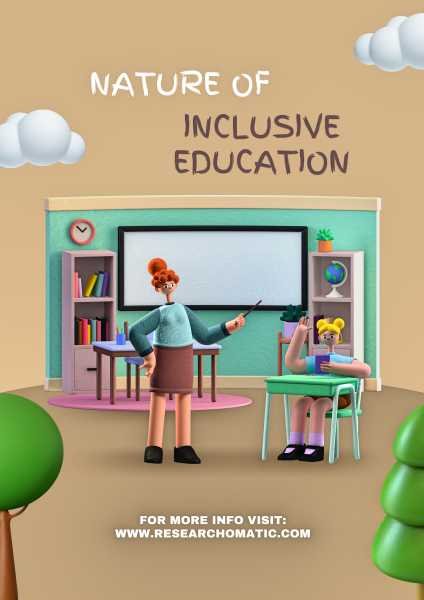INCLUSIVE EDUCATION:
Inclusive education is ready to search through our school building, classrooms, packages, and publications for each child to participate and learn. Installations are ready to find specific training methods so that the instructions are of concern to all children. It is a perfect way of finding ways to build friendships, relationships, and appreciation for harmony between all children and between children and teachers at school. Involvement training is not limited to certain children, nor should it be something a child has to be prepared for.
Also Read: Five top Educational Trends
Students are continually geared up to visit colleges and classrooms to maintain the presentable nature of Inclusive education and promote the knowledgable values of an inclusive educational system. However, the participation of students is inaccessible. Inclusive teaching is a way of asking if we will have the creativity to build our colleges or a place where all children can participate. Creativity may suggest that teachers develop traditions to teach in a variety of ways. Doing this will help them organize their classes, making the students comfortable. Overall, inclusive training expects us to acknowledge all students and recognize their experiences throughout life.
Beliefs and Principles
All kids are supported to study, contribute, and participate in all school life elements through inclusive education. It firmly implies to all the students attending and accepting the local schools in age-appropriate and typical courses. Inclusive education refers to the way we plan and build our schools, classes, programs, and activities, encouraging the students to learn and participate equally. Neighborhood schools are at the core of our communities, and Inclusion education believes they are critical to providing a high-quality inclusive education system. As a result, we believe it is critical to maintaining a public education system in communities.
Some noticeable paybacks of Inclusive education are explained in the following manner.
- Promotes each child’s unique qualities, capabilities, and abilities by setting high and reasonable expectations.
- Works on personal goals while interacting with other children of their own age in the classroom.
- Involvement of children’s education and school activities encourages them to perform even better every time.
- Creates a beneficial and respectful School culture that promotes equality in the Inclusive learning environment.
- Minimize the impact of harassment and bullying; inclusive education provides an opportunity to learn about and appreciate individual differences.
- Form friendships with a diverse group of other kids, each with their unique set of needs and abilities.
- The nature of Inclusive education predetermined and Influenced both their school and community to value diversity and inclusion on a larger scale.
Inclusive Education Strategies:
The need for teachers to be assisted in adopting an inclusive classroom is obvious. However, according to a thorough analysis of the data, most teachers had either neutral or unfavorable attitudes toward inclusive education. It turns out that a lot of teachers feel uncomfortable due to their lack of confidence, competence, and knowledge about how to teach in inclusive classrooms.
More experienced teachers who trained for inclusive teaching had high hopes of involvement in the inclusive education system. Following a conducted research, teachers need to understand best practices in customized teaching in inclusive environments. However, positive attitudes of teachers towards inclusion are also required in building an inclusive working class.
Inclusive education systems are a mixture of unique strategies and tactics that help build a formulated structure of an inclusive education system. The following strategies are key to creating an effective inclusive educational environment.
- The school and classroom operate on the assumption that children with disabilities are fundamentally as competent as children without disabilities. This approach allows all students to participate fully in their classes and school activities. It also emphasizes inclusion, meaning students with disabilities spend as much time as possible with their non-disabled classmates, with general education being the preferred setting for everyone.
- Accepting, understanding, and attending to student differences and diversity, which might encompass physical, cognitive, academic, social, and emotional aspects, is key to a successful inclusive education. The topic isn’t to argue that children never need to spend time outside of regular education classrooms; they do so on occasion for precise reasons, such as speech or occupational therapy. However, the idea is for this to be the exception.
CONCLUSIVE PARAGRAPH:
Inclusive education is ready searching on the structure of our schools, classrooms, packages, and publications so that each student can take part and learn. The nature of the Inclusive education system treated every student equally. However, the inclusion is ready to locate specific coaching techniques so that all students are concerned. Moreover, inclusive training acknowledges students and recognizes the challenges they face in their lives.

